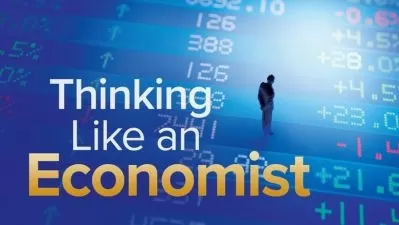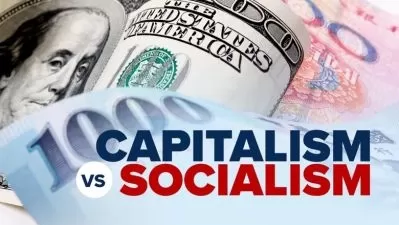Strategic Macroeconomics for Business & Investing
Peter Navarro
10:43:10
Description
Managing Your Company and Personal Finances Over the Business and Financial Market Cycles
What You'll Learn?
- Learn the basic principles of macroeconomics from a strategic point of view
- Learn how to apply macroeconomics in your daily personal and business life
- Understand how to forecast and manage your company over the business cycle
- Understand how macroeconomic events affect stock, bond and financial markets
- Better manage your personal finances and economic choices
Who is this for?
More details
DescriptionProfessor Navarro’s unique and internationally recognized expertise lies in his ‘big picture’ application of a highly sophisticated but easily accessible macroeconomic analysis of the business cycle and stock and bond markets for corporate executives and investors.Â
In this course, "Prof Navarro" weds business and financial market strategies with the principles of macroeconomics. In doing so, he offers a powerful toolbox together with cases and lessons across all major functions of business, management, from finance, operations management, and marketing to human resource management, organizational behavior, statistics, and, of course, business strategy.
The central idea behind this course is to help you profitably manage over the ups and downs of the business cycle and the related stock and bond market cycles -- whether you are a corporate executive, a financial market advisor or analyst, or perhaps a blue-collar worker or retiree worried about how economic conditions may affect your wages and value of your pension.
As a corporate manager or executive, you should always be thinking about whether a recession might be coming. What should you look for? If the recession comes, what kind of management decisions should you make?
Often times, in a recession, the kneejerk corporate reaction is to do just the opposite of what profitability says you should do. For example, the kneejerk reaction is often to fire people; but a recession can offer great opportunities to "cherry pick" the best of the talent that other companies are all too quickly casting off.
Similarly, corporate executives tend to cut back dramatically on capital expenditures during recessions. Yet, investing in new plant and equipment during a recession can position a company to reap great rewards through more innovative and efficient production.
There are similar questions and lessons for financial advisors and managers -- or just plain "folk" managing their own personal and retirement portfolios. For example, how can you avoid the pain of a bearish stock market that typically is the harbinger of recession? And when might be the best time to shift your portfolio more to bonds?Â
This course will help you think through all of these questions and thereby position you for greater stability and prosperity across the range of global economic conditions.  So, let's roll our sleeves and get to work!
Who this course is for:
- Investors, corporate executives, and just plain folks interested in managing their finances in an increasingly chaotic global economic environment
Professor Navarro’s unique and internationally recognized expertise lies in his ‘big picture’ application of a highly sophisticated but easily accessible macroeconomic analysis of the business cycle and stock and bond markets for corporate executives and investors.Â
In this course, "Prof Navarro" weds business and financial market strategies with the principles of macroeconomics. In doing so, he offers a powerful toolbox together with cases and lessons across all major functions of business, management, from finance, operations management, and marketing to human resource management, organizational behavior, statistics, and, of course, business strategy.
The central idea behind this course is to help you profitably manage over the ups and downs of the business cycle and the related stock and bond market cycles -- whether you are a corporate executive, a financial market advisor or analyst, or perhaps a blue-collar worker or retiree worried about how economic conditions may affect your wages and value of your pension.
As a corporate manager or executive, you should always be thinking about whether a recession might be coming. What should you look for? If the recession comes, what kind of management decisions should you make?
Often times, in a recession, the kneejerk corporate reaction is to do just the opposite of what profitability says you should do. For example, the kneejerk reaction is often to fire people; but a recession can offer great opportunities to "cherry pick" the best of the talent that other companies are all too quickly casting off.
Similarly, corporate executives tend to cut back dramatically on capital expenditures during recessions. Yet, investing in new plant and equipment during a recession can position a company to reap great rewards through more innovative and efficient production.
There are similar questions and lessons for financial advisors and managers -- or just plain "folk" managing their own personal and retirement portfolios. For example, how can you avoid the pain of a bearish stock market that typically is the harbinger of recession? And when might be the best time to shift your portfolio more to bonds?Â
This course will help you think through all of these questions and thereby position you for greater stability and prosperity across the range of global economic conditions.  So, let's roll our sleeves and get to work!
Who this course is for:
- Investors, corporate executives, and just plain folks interested in managing their finances in an increasingly chaotic global economic environment
User Reviews
Rating
Peter Navarro
Instructor's Courses
Udemy
View courses Udemy- language english
- Training sessions 85
- duration 10:43:10
- Release Date 2023/04/11






















